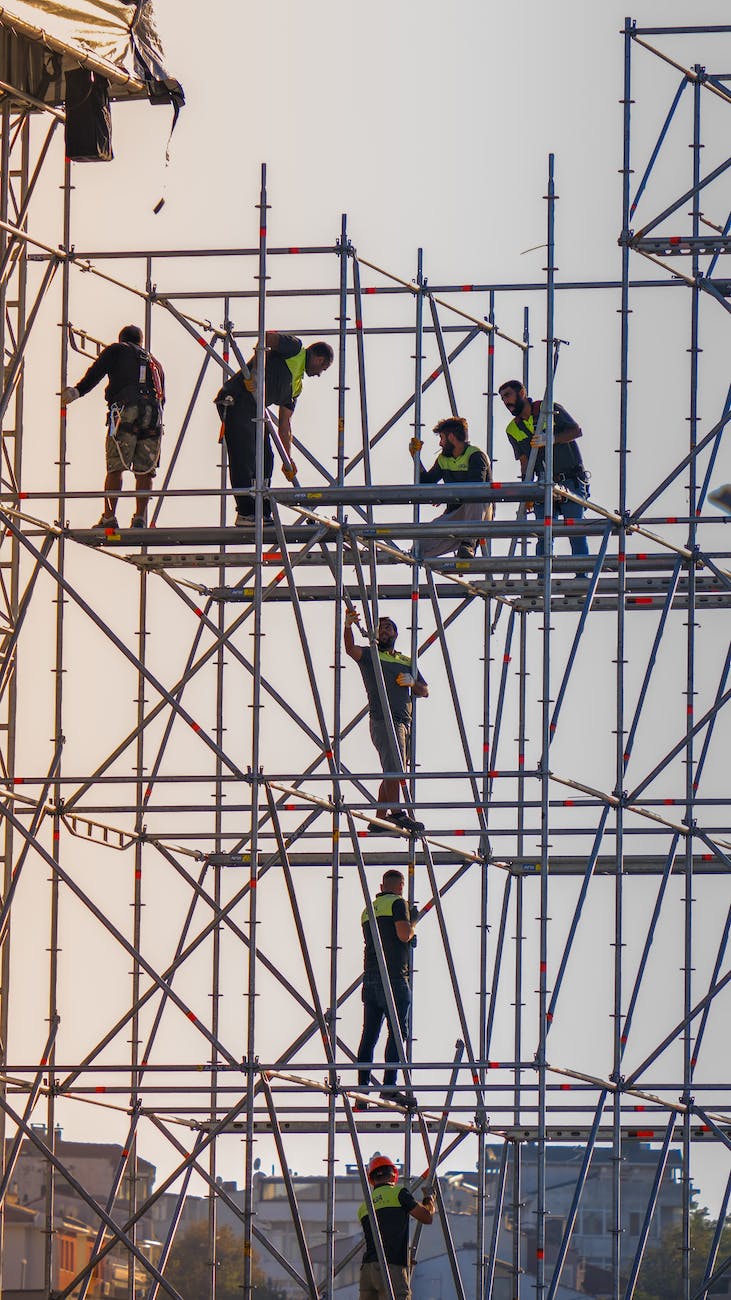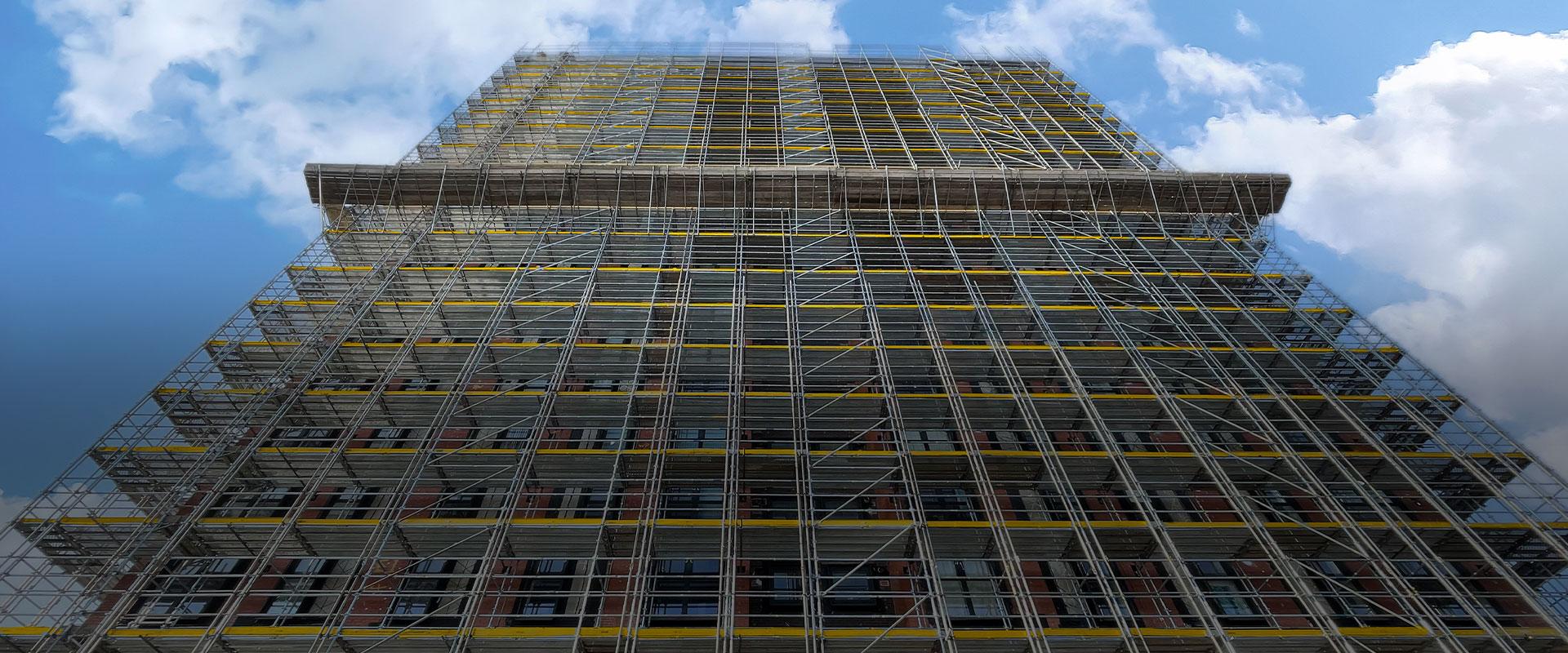A Comprehensive Overview to the Necessary Functions of Scaffolding in Modern Construction
The landscape of modern-day building increasingly counts on reliable scaffolding systems that prioritize safety and security, effectiveness, and innovation. As tasks grow in intricacy, understanding the necessary features of scaffolding ends up being critical for making sure worker safety and enhancing task timelines. This guide checks out numerous kinds of scaffolding, highlights crucial safety and security features, and takes a look at product developments that add to efficiency and sustainability. However, the implications of these aspects expand far beyond simple building and construction practices, triggering a more detailed check out just how they influence overall job success and worker wellness.
Kinds Of Scaffolding
Although scaffolding systems can vary widely in design and application, they usually drop into several distinctive classifications that accommodate various building and construction requirements - Scaffolding. The most usual types consist of supported scaffolding, suspended scaffolding, and rolling scaffolding
Sustained scaffolding contains systems supported by a framework of posts, which offer a stable and raised functioning surface. This kind is usually used for jobs that require substantial elevation, such as bricklaying or external painting.
Put on hold scaffolding, conversely, is used for tasks requiring accessibility to high altitudes, such as cleaning or fixing structure facades. This system hangs from a roof or an additional structure, allowing workers to reduced or elevate the platform as needed.
Moving scaffolding attributes wheels that permit easy wheelchair across a work site. It is especially useful for tasks that need frequent moving, such as indoor operate in large areas.
Each kind of scaffolding is made with specific applications in mind, guaranteeing that building and construction tasks can be performed efficiently and efficiently. Comprehending these classifications is critical for selecting the appropriate scaffolding system to meet both project demands and site conditions.
Secret Security Functions
Security is vital in scaffolding systems, as the potential risks related to operating at heights can lead to serious accidents otherwise properly taken care of. Trick safety features are essential to ensure the health of workers and the stability of the building site.
Firstly, guardrails are essential. These barriers provide a physical guard versus falls, substantially decreasing the risk of serious injuries. In addition, toe boards are usually made use of to avoid tools and products from diminishing the scaffold, safeguarding workers listed below.
One more vital part is making use of non-slip surfaces on systems. This feature boosts hold, especially in damaging climate condition, thereby reducing the probability of drops and slips. Moreover, access ladders must be firmly positioned to assist in safe entry and departure from the scaffold.
Regular assessments and upkeep of scaffolding systems are also essential. These assessments guarantee that all components are in good condition and operating correctly, dealing with any type of wear or damage without delay.
Last but not least, correct training for all personnel included in scaffolding procedures is necessary to make sure that they comprehend security procedures and can recognize possible risks. Scaffolding. Collectively, these features develop a more secure working environment and substantially mitigate risks connected with scaffolding
Product Developments
Developments in material scientific research have considerably influenced the scaffolding sector, enhancing both safety and performance in modern construction. The introduction of high-strength steel and aluminum alloys has actually reinvented standard scaffolding systems.
Furthermore, innovative composite materials, such as fiberglass-reinforced plastics, have arised as practical options. These products are resistant to rust and environmental destruction, thus prolonging the life-span of scaffolding systems, particularly in harsh climate problems. Making use of such products adds to decrease maintenance costs and makes certain regular efficiency over time.


Layout Factors To Consider
Considering the intricacies of modern building tasks, effective scaffolding style is scaffolding rental critical to ensuring both performance and safety. Style considerations have to incorporate various elements, including tons capacity, elevation, and the details demands of the building site. Each job presents distinct challenges, demanding a versatile strategy to scaffolding systems that can adjust to differing conditions.
Architectural honesty is essential; for that reason, designers need to calculate the loads that the scaffolding will certainly sustain, including employees, materials, and equipment. The selection of materials click to read more plays an essential duty in making sure the scaffolding can endure these tons while remaining long lasting and light-weight. In addition, the layout has to enable simple access and egress, assisting in the smooth activity of employees and products.
Safety attributes, such as guardrails and non-slip surfaces, ought to be integrated to minimize risks of crashes. Additionally, the layout has to consider the surrounding atmosphere, consisting of possible hazards and adjacent frameworks. By attending to these layout considerations, construction firms can enhance the effectiveness of scaffolding systems and advertise a more secure working environment, eventually contributing to the total success of the project.
Maintenance and Assessments
The effectiveness of scaffolding systems extends beyond preliminary layout and implementation; continuous maintenance and routine evaluations are vital to guaranteeing their continued performance and security throughout the duration of a project. Regular inspections ought to be carried out by certified workers to recognize any kind of indications of wear, damage, or instability that can endanger the honesty of the scaffolding.
Maintenance methods should include regular checks of architectural parts, such as structures, fittings, and slabs, ensuring that all components stay free and safe from corrosion or various other degeneration. Additionally, the capability of security attributes, such as guardrails and toe boards, need to be evaluated to ensure conformity with safety guidelines.
Documentation of all examinations and maintenance tasks is important for accountability and regulative conformity. A systematic strategy to record-keeping not only help in tracking the problem of the scaffolding however additionally provides needed proof in case of an incident.
Eventually, establishing a thorough maintenance and assessment schedule will substantially lower the risk of mishaps and boost the overall security of the building and construction site. By prioritizing these techniques, building and construction managers can protect employees and promote the project's integrity.

Final Thought
In final thought, the vital functions of scaffolding in contemporary construction encompass a series of vital aspects, including diverse kinds, crucial security mechanisms, product technologies, and thoughtful style considerations. Emphasizing safety and security with guardrails and non-slip surfaces, along with improvements in materials like high-strength steel, boosts both efficiency and sustainability. Normal maintenance and examinations are crucial for ensuring architectural integrity and safety and security on construction websites, ultimately assisting in efficient job execution and promoting the health of workers.
The landscape of modern-day construction progressively counts on efficient scaffolding systems that focus on safety and security, innovation, and efficiency.Advancements in material scientific research have actually significantly influenced the scaffolding market, boosting both safety and security and efficiency in modern building. Generally, these product technologies not only enhance the performance and security of scaffolding systems however likewise line up with the sector's press in the direction of sustainability, as several modern products are designed to be more environmentally friendly.
Considering the complexities of modern construction projects, effective scaffolding design is critical to guaranteeing both functionality and safety.In conclusion, the important attributes of scaffolding in modern-day building and construction incorporate click here to read a variety of important aspects, consisting of diverse types, key safety and security devices, product advancements, and thoughtful style considerations.